11 Rights All Students (Should) Have
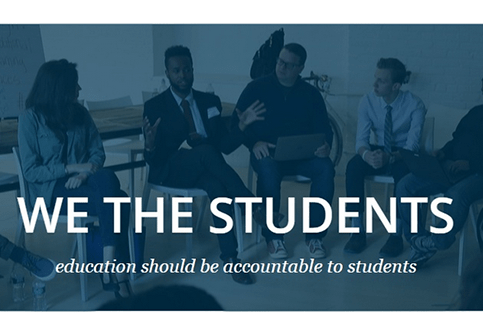
Updated in 2025.
By: Erik Martin
It’s rare when students get to inform education policy decisions, much less influence how our schools run. Many decisions are made for us, and asking what we think is often an afterthought. The new Student Bill of Rights is working to change that. The concept of a Student Bill of Rights is not new, but if student rights are to be truly authentic and learner-driven, those rights must come from students.
First and foremost, the Student Bill is a mechanism for empowering students in schools across the nation to voice their opinions and needs, driving holistic educational progress. A cornerstone of this undertaking is improving the learning that happens in our schools, which greater student autonomy and engagement has repeatedly proven to do. More fundamentally, students are people and people have rights, as the Supreme Court has ruled. If we want future generations of informed, engaged citizens, we should treat them that way from the start.
Student Voice, our student-run organization driving this initiative, can’t speak for every student in the nation, so we won’t try to. We’re shooting for baby steps, but lots of them together.
These 11 student-driven amendments will change the future of education by being grassroots building blocks for change:
1. Free Expression
Want to know what schools are really like at the classroom level? Letting students speak out will give you far more insightful and detailed answers than relying solely on tests. Schools should be held accountable by their students, too. Students should be able to express their ideas and speak out about their experiences without fear or suppression.
Example: Increasingly, students must be given the opportunity to demonstrate public leadership on real-world challenges effecting their community. This combination of civic knowledge, design thinking and agreement crafting will help set these students up for success in community-connected design and leading. One example of this is empowering students to serve on the school board. Every school board should have present and prospective students sitting on the board.
- Oregon: The state board of education has a student representative, and individual districts can choose to have student representatives.
- California: The state education code allows for a student board member on every district board. Many districts, including the Los Angeles Unified School District (LAUSD), have student board members.
- Maryland: Every school board in the state has a student board member. The state board also has a student member.
- Massachusetts: Some school districts, like Boston Public Schools, have a student representative on their school committees.
- Minnesota: The state encourages student representation on district boards, but it’s up to individual districts to decide.
2. Safety and Wellbeing
According to the Centers for Disease Control and Prevention’s most recent Youth Risk Behavior Survey, more students than ever before feel unsafe in school, and 19 percent report being bullied at school. The National Institute of Mental Health also reports that suicide is the third leading cause of death among youth, and 11 percent of youth will fight depression by the time they turn 18. Students should be safe and supported in school, physically and mentally.
3. Due Process
According the U.S. Department of Education, about 200,000 students faced corporal punishment in 2006; of those, 39,000 were students with disabilities. The vast majority of people who go into education do so for a love for helping children grow and succeed. Still, there remain pockets of abhorrent abuse, and we need to do more to end it. Students have a right to fair and just treatment, free of coercion and fear.
4. Personal Learning
The national ratio of school counselors to students in this country is 478 to 1. What’s more, 1 in 5 high schools have no counselors at all. This lack of support is a significant burden for low-income students in particular, and as a result, many smart and capable students simply never pursue opportunities because no one told them they could or should, or was there to help them reach higher. Of course, personal learning is much broader than just guidance counselors, it’s about supporting students as individuals first. As Ken Robinson has said, “The answer is not to standardize education, but to personalize and customize it to the needs of each child and community. There is no alternative. There never was.”
5. Institutional Agency
Any discussion about student rights needs to include students at the table. Students need to inform policy and contribute to decisions. The difference between experimenting and innovating in education is the difference between students as guinea pigs, and students being authentic partners of change. We must have the right to help shape our institutions and future.
6. Information and Privacy
This is a two-way street. Data has always played a critical role in how teachers identify their students’ needs to help them learn and grow. In the digital age, we have to ensure that students have control over their information, and protect students from the possibilities of privacy intrusions or abuse.
7. Employability
Among education’s loftier goals is the preservation and progress the republic. Part of that is maintaining an economy that provides every citizen with opportunities to find meaningful work that allows them to support themselves and their families. Education must be grounded in this goal before reaching higher. Students need to know that staying in school will prepare them for a job.
Example: Every learner deserves access to personalized pathways to opportunity. This includes work-based learning opportunities like internships, client-connected project and powerful experiences like entrepreneurship and more.
8. Civic Participation
Duly noted, we’ve got a republic to preserve here, people! Want citizens who vote, know the issues, and give a general damn? Let them get started while they’re still in school. Students have a right to learn by improving their communities and society, we don’t need to wait until after graduation to make things better.
Example: Including civics in the outcome framework for your state, school or district is an effective way to begin. These may manifest as a formal Portrait of a Graduate/Learner, or they may show up as more of a credential to append to a transcript.
- Washington State Profile of a Graduate: The vision of a Washington State high school diploma is: “Students are ready for success in postsecondary education, gainful employment, citizenship, and are equipped with the skills to be lifelong learners.”
- Kettle Moraine Graduate Profile: The Kettle Moraine profile has six core competencies that stretch from K-12: Engaged Citizen, Communicator, Self-Directed & Resilient Individual, Continuous Learner, Collaborator, Creative & Critical Thinker.
- DaVinci Rise Profile: The Da Vinci Rise Profile focuses on communication, collaboration, problem-solving, critical thinking, and citizenship. “We want kids not only to graduate. That’s not our only goal. It’s really that they graduate knowing who they want to be, knowing where they’re going, and having the support to get there.”
Example: Some states have added graduate seals denoting a competency in civics:
- New York City Seal of Civic Readiness is an official acknowledgment that a student has achieved a high level of proficiency in civic knowledge, skills, mindset, and experiences. This distinction on a high school transcript and diploma indicates the student’s understanding and commitment to participatory government, civic responsibility, civic values and demonstrates the completion of a civics or social justice action project.
- The Kentucky Civil Seal is earned when a student “exhibit[s] their understanding, application, and reflection upon local, state, and national governance; commitment to democratic principles and promoting the common good; informed participation in civic spaces; and reflection upon their role in modern civic life.” This Seal can be earned by all grade levels and is fully personalized.
9. Fair Assessment
Assessment helps ensure we deliver on the promise of public education; that truly no one gets left behind, despite the baggage that phrase carries. Current assessments can be inadequate, even detrimental, to that goal. For example, only half as many students with learning differences (such as dyslexia) score average or better on standard assessments than students without LDs, and it’s not because they’re more stupid. Assessment should lift us up, not put us down. Students should have the right to demonstrate mastery in a way that respects and supports them as unique learners.
10. Technology
There isn’t space here to dismantle the “digital natives” argument, but just because we have smartphones and Instagram accounts doesn’t mean our generation is adequately prepared to lead the innovations of the century. We need high speed internet access, devices, and up-to-date software in our schools, and we need it today. The current administration has made tremendous strides to this end, and hopefully whomever is next will continue on.
11. Diversity and Inclusivity
Our generation is riding a cultural and demographic wave that will redefine our nation. Our schools will see this change first, as they always have, and we must make sure that they are not worn down by the same racism, sexism, classism, homophobia, and other vices that cling to our society. The classroom should be a place where everyone can come together to learn.
Ultimately, the Student Bill of Rights is not a hall-pass that permits students to participate in changing their schools and be heard. We are already doing that. Students like Dawnya Johnson are helping fellow Baltimore youth improve job opportunities and attend college, Niki Adeli is speaking out on changing standardized assessment, and Tess Harkin and Sam Parekh, student journalists who covered the national superintendents summit at the White House earlier this year to improve the state of technology in schools. Organizations like the Student Press Law Center have also provided unwavering leadership supporting student free speech, and Active Minds works with students to reduce stigmas around mental health at their schools.
What we need now is collective action. There are about 55 million K-12 students in this country, and about 20 million in degree-granting colleges. If students are treated as allies rather than subjects, imagine what could be achieved. We, the students, merely suggest these rights to ensure a more perfect education for all. Learn more or join the movement at StuVoice.org and read all 11 rights at StuRights.org.
Erik Martin is Chief Editor at StuRights.org.
Editor’s Note (2025)
Erik’s post about 11 rights that students (should) have is a great representation of student voice agency, topics that have only gained in importance since the writing in 2015. From students serving on the school board to student lists of demands, there’s lots more where that came from. Check it out below.



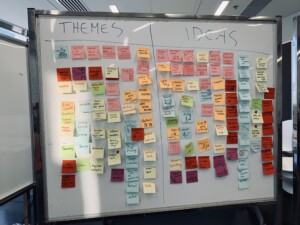
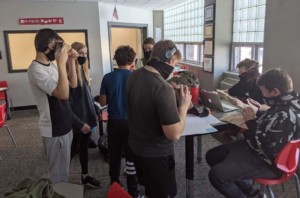
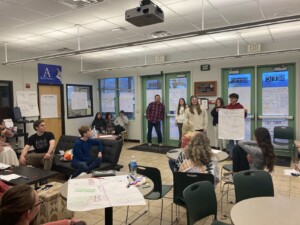
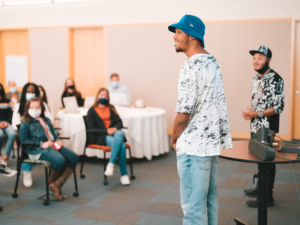
zander
this is pretty good it is helping me on my assignment
Kenneth Gardner
im trying to figure out if my school is in the wrong for failing me in all classes because i missed to many days due to doctors appointments
Carrie N
What about a right to movement? Many students are either "punished" or "disciplined" or held back to do schoolwork during critical scheduled movement breaks. If an adult was denied access to a break required by law, what then of a child denied access to a break from sustained mental effort with no opportunity to recharge?